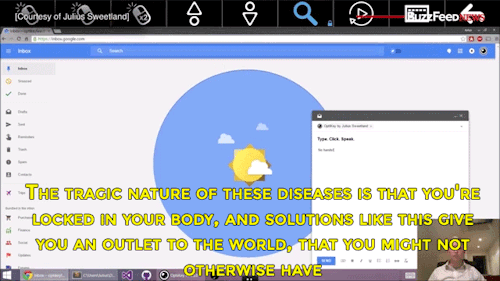Dotmpotter - Dot Potter
More Posts from Dotmpotter and Others
AIDS-drug-gouging hedge-douche reneges on promise to cut prices for Daraprim

Martin Shkreli, the hedge-fund douche-bro who hiked the price of an off-patent drug used by AIDS and cancer patients from $13.50 to $750, then promised to lower the prices after becoming the Most Hated Man on the Internet did no such thing, because he is a liar.
http://boingboing.net/2015/11/25/aids-drug-gouging-hedge-douche.html
Silica nanoparticles could be used to repair damaged teeth

Researchers at the University of Birmingham have shown how the development of coated silica nanoparticles could be used in restorative treatment of sensitive teeth and preventing the onset of tooth decay.
The study, published in the Journal of Dentistry, shows how sub-micron silica particles can be prepared to deliver important compounds into damaged teeth through tubules in the dentine.
The tiny particles can be bound to compounds ranging from calcium tooth building materials to antimicrobials that prevent infection.
Professor Damien Walmsley, from the School of Dentistry at the University of Birmingham, explained, “The dentine of our teeth have numerous microscopic holes, which are the entrances to tubules that run through to the nerve. When your outer enamel is breached, the exposure of these tubules is really noticeable. If you drink something cold, you can feel the sensitivity in your teeth because these tubules run directly through to the nerve and the soft tissue of the tooth.”
“Our plan was to use target those same tubules with a multifunctional agent that can help repair and restore the tooth, while protecting it against further infection that could penetrate the pulp and cause irreversible damage.”
The aim of restorative agents is to increase the mineral content of both the enamel and dentine, with the particles acting like seeds for further growth that would close the tubules.
Previous attempts have used compounds of calcium fluoride, combinations of carbonate-hydroxypatite nanocrystals and bioactive glass, but all have seen limited success as they are liable to aggregate on delivery to the tubules. This prevents them from being able to enter the opening which is only 1 to 4 microns in width.
However, the Birmingham team turned to sub-micron silica particles that had been prepared with a surface coating to reduce the chance of aggregation.
When observed using high definition SEM (Scanning Electron Microsopy), the researchers saw promising signs that suggested that the aggregation obstacle had been overcome.
Professor Zoe Pikramenou, from the School of Chemistry at the University of Birmingham, said, “These silica particles are available in a range of sizes, from nanometre to sub-micron, without altering their porous nature. It is this that makes them an ideal container for calcium based compounds to restore the teeth, and antibacterial compounds to protect them. All we needed to do was find the right way of coating them to get them to their target. We have found that different coatings does change the way that they interact with the tooth surface.”
“We tested a number of different options to see which would allow for the highest level particle penetration into the tubules, and identified a hydrophobic surface coating that provides real hope for the development of an effective agent.”
Our next steps are to optimise the coatings and then see how effective the particles are blocking the communication with the inside of the tooth. The ultimate aim is to provide relief from the pain of sensitivity.
University of Birmingham
Nanotechnology World Association









Watch the video of this man giving away his software for free to help people with degenerative diseases communicate

A new online platform to promote women’s economic empowerment is here! UN Women and the Government of Canada recently launched an online platform, the Global Knowledge Gateway for Women’s Economic Empowerment, which aims to re-vitalize women’s economic empowerment by building connections, and providing users with tools and resources necessary to be empowered. Get the link to this exciting new initiative here: www.empowerwomen.org

A 40-year-old man proposed to Salamatou when she was just 14. Every year, tens of thousands of girls are married before reaching their 18th birthday.
They are some of the most vulnerable girls on earth. They are denied their rights, they are at risk of abuse, their health is jeopardized, and their future prospects are limited.
From 25 November to 10 December, the world observes 16 days of activism against gender-based violence.
In Niger, which has one of the highest child marriage rates in the world, 16 extraordinary girls refused to become child brides. Read their stories here: http://www.unfpa.org/16-girls-16-stories-resistance


HiPOD (2 May 2018): Clays in a Grouping of Small Craters
— 282 km above the surface. Black and white is 5 km across; enhanced color is less than 1 km.
NASA/JPL/University of Arizona
The study authors have calculated the cost of the “lost ecosystem services value” our planet has suffered in the last decade and a half. According to their calculations, the loss due to land degradation averages US $43,400 to $72,000 per square km, some US $870 to $1,450 per person, globally each year. The percentage of the world’s land affected by land degradation has grown a lot in the last decades – it has doubled between the late 1970s and the early 2000s. And the process is far from its end.
“This study by ELD shows the immediate and global impact of land degradation and highlights that actions to tackle it pay off,” Karmenu Vella, European Commissioner for Environment, Fisheries and Maritime Affairs commented on the paper.
“Increased land degradation is also one of the factors that can lead to migration and it is being exacerbated by climate change. On our planet, the area affected by drought has doubled in 40 years. One third of Africa is threatened by desertification. As President Juncker said in his State of the Union speech last week, climate refugees will become a new challenge – if we do not act swiftly.”
-
 georgha liked this · 2 months ago
georgha liked this · 2 months ago -
 ase-trollplays reblogged this · 2 months ago
ase-trollplays reblogged this · 2 months ago -
 ironvitriol reblogged this · 6 months ago
ironvitriol reblogged this · 6 months ago -
 leftbeeftheory liked this · 7 months ago
leftbeeftheory liked this · 7 months ago -
 haveahearttinman reblogged this · 7 months ago
haveahearttinman reblogged this · 7 months ago -
 cipscanta liked this · 11 months ago
cipscanta liked this · 11 months ago -
 fieldmemory liked this · 11 months ago
fieldmemory liked this · 11 months ago -
 punkeropercyjackson reblogged this · 11 months ago
punkeropercyjackson reblogged this · 11 months ago -
 punkeropercyjackson liked this · 1 year ago
punkeropercyjackson liked this · 1 year ago -
 actualpunkpercyjackson liked this · 1 year ago
actualpunkpercyjackson liked this · 1 year ago -
 mayacondotcom reblogged this · 1 year ago
mayacondotcom reblogged this · 1 year ago -
 honeypotsworld liked this · 1 year ago
honeypotsworld liked this · 1 year ago -
 jesterpanic reblogged this · 1 year ago
jesterpanic reblogged this · 1 year ago -
 theultimatesagavan liked this · 1 year ago
theultimatesagavan liked this · 1 year ago -
 jasontoddssuper reblogged this · 1 year ago
jasontoddssuper reblogged this · 1 year ago -
 jasontoddssuper liked this · 1 year ago
jasontoddssuper liked this · 1 year ago -
 r3adyforthemoshpitshakabrah liked this · 1 year ago
r3adyforthemoshpitshakabrah liked this · 1 year ago -
 littlev1234 reblogged this · 1 year ago
littlev1234 reblogged this · 1 year ago -
 siriuslypoppunk reblogged this · 1 year ago
siriuslypoppunk reblogged this · 1 year ago -
 esidisi-86 liked this · 1 year ago
esidisi-86 liked this · 1 year ago -
 techs-sideblog liked this · 1 year ago
techs-sideblog liked this · 1 year ago -
 mangotastic97 reblogged this · 1 year ago
mangotastic97 reblogged this · 1 year ago -
 memetrash-coyote reblogged this · 1 year ago
memetrash-coyote reblogged this · 1 year ago -
 memetrash-coyote liked this · 1 year ago
memetrash-coyote liked this · 1 year ago -
 catalina-kachie reblogged this · 1 year ago
catalina-kachie reblogged this · 1 year ago -
 knightofiris reblogged this · 1 year ago
knightofiris reblogged this · 1 year ago -
 toughbaefang reblogged this · 1 year ago
toughbaefang reblogged this · 1 year ago -
 jeik66 liked this · 1 year ago
jeik66 liked this · 1 year ago -
 roboticutie liked this · 1 year ago
roboticutie liked this · 1 year ago -
 warmpastries liked this · 1 year ago
warmpastries liked this · 1 year ago -
 theiform reblogged this · 1 year ago
theiform reblogged this · 1 year ago -
 theiform liked this · 1 year ago
theiform liked this · 1 year ago -
 prismaticpastry reblogged this · 1 year ago
prismaticpastry reblogged this · 1 year ago -
 apheliavampire reblogged this · 1 year ago
apheliavampire reblogged this · 1 year ago -
 tetsu44th liked this · 1 year ago
tetsu44th liked this · 1 year ago -
 almalexia-the-warden reblogged this · 1 year ago
almalexia-the-warden reblogged this · 1 year ago -
 queenly-robyn reblogged this · 1 year ago
queenly-robyn reblogged this · 1 year ago -
 stutteringphantom reblogged this · 1 year ago
stutteringphantom reblogged this · 1 year ago -
 stutteringphantom liked this · 1 year ago
stutteringphantom liked this · 1 year ago -
 kikuriki reblogged this · 1 year ago
kikuriki reblogged this · 1 year ago -
 chinchella liked this · 1 year ago
chinchella liked this · 1 year ago -
 idontfeellikedrawing reblogged this · 1 year ago
idontfeellikedrawing reblogged this · 1 year ago -
 angele-midnight liked this · 1 year ago
angele-midnight liked this · 1 year ago -
 goldwingthescholar reblogged this · 1 year ago
goldwingthescholar reblogged this · 1 year ago -
 fandomhopper7 reblogged this · 1 year ago
fandomhopper7 reblogged this · 1 year ago -
 laurelandmarigold liked this · 1 year ago
laurelandmarigold liked this · 1 year ago -
 lonestarcelt reblogged this · 1 year ago
lonestarcelt reblogged this · 1 year ago -
 cartoondemon liked this · 1 year ago
cartoondemon liked this · 1 year ago -
 lesbian-octo8 liked this · 1 year ago
lesbian-octo8 liked this · 1 year ago




